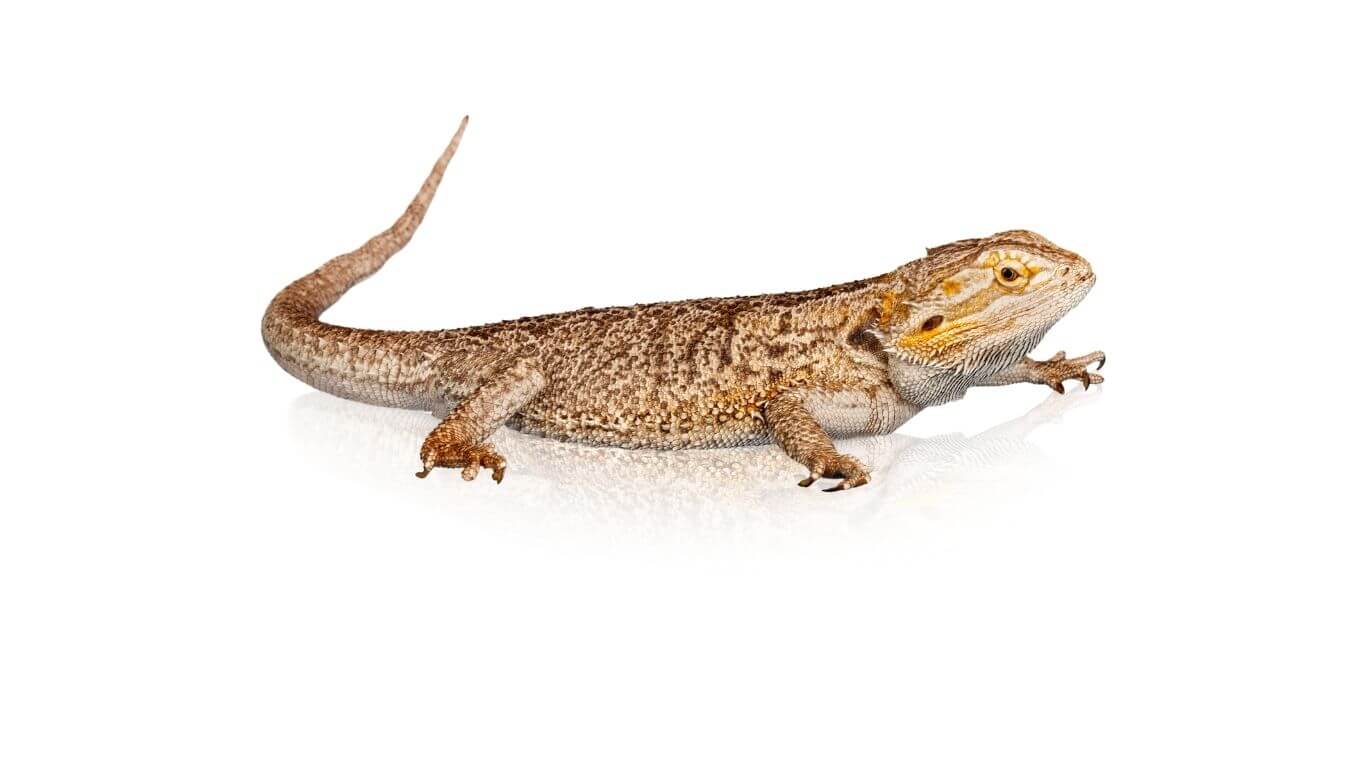
Wiggling behaviour is most common in mammals to indicate happiness like in dogs and cats. But what does it mean when your bearded dragon wags its tail?
When your bearded dragon wags its tail it’s hard to decipher the meaning like in dogs and cats because they are inexpressive and shy.
Below we have provided insights into the reason behind wiggling behavior. They include:
Hunting Mode
Cats and dogs mostly wiggle their tail when they are about to pounce on their prey. The same applies to bearded dragons as a sign they are getting ready to pounce on their prey or something if they are in hunting mode.
When in hunting mode they twitch their tail to help them regain balance in a fast side to side motion as they try to pounce on their prey. This is most noticeable when hunting Dubia roaches, crickets or letting them hunt like in the wild.
To decipher better whether your bearded dragon is in hunting mode check if there is prey within their surroundings and they wiggle their tail conspicuously while stretching out their necks. This means they are ready to take a swift dive towards their prey or food.
Balance
A bearded dragon may wiggle its tail for a balance mechanism. For instance, if you try to pick up your bearded dragon unexpectedly, it will immediately wiggles its tail. This is to indicate the feeling is disorienting or not comfortable because it wasn’t keen on being picked up at the time.
Thus, he could struggle to get free and defensive, then swing its tail to regain balance in search of solid footing. Therefore, don’t pick them up unexpectedly without preparing them because it induces fear and stress in your beardie.
Before you pick your beardie up, make sure to hold him securely. If you notice any sign of discomfort when you try to pick them up, we recommend respecting these cues and allowing them to have space and their time to recover.
They are Enjoying their Food
Sometimes when you feed your beardy you will likely notice their tail is up and then wags it while eating. This body language indicates they are alert and enjoy eating their food.
This behaviour is common in juvenile bearded dragons when you provide them with their favorite food like crickets and Dubia roaches.
In adult bearded dragons this behaviour is rare while they are eating because they are serious about eating.
Instead, they tend to approach the food with their mouths wide open as they force their head in the direction of their prey.
Due to Illness
Sometimes don’t misinterpret tail twitching for alertness or happiness. In fact, you should worry and try to observe the frequency of tail twitching because it may indicate that it is stressed or does not absorb calcium properly.
If you observe unusual twitching behaviour regardless of age and mealtime, followed by other symptoms like lethargy or decreased appetite, it indicates a wide array of ailments in bearded dragons.
This may include; liver disease, seizures related to injury, infection atadenovirus, and Metabolic Bone Disease.
Therefore, it is advisable to schedule an appointment with the vet promptly for a checkup and professional advice regarding their calcium intake.
Besides, it is also imperative to schedule annual checkups with the veterinarian.
Defense Mechanism
If you caught your bearded dragon wiggling its tail and none of the above-mentioned reasons doesn’t trigger this behaviour, then your beardie is likely under stress.
Hence, it will try to employ wiggling behavior to act tough for defense purposes against predators. Besides before you conclude that they are tensed, try to check if they portray signs of aggressiveness like gapping and fast head-bobbing behaviour.
Conclusion
Wiggling behaviour is most common in baby and juvenile bearded dragons to indicate excitement and sometimes hunger, unlike in adult bearded dragons.
That is to say, an adult bearded dragon can also wiggle, but occasionally due to some of the reasons we have mentioned above, while juveniles do it for fun and above reasons.
But don’t forget to check up for any sign of discomfort while they are wiggling their tail.
Recommended reading what does it mean when a bearded dragon shakes?
- Are you supposed to clip a bearded dragon’s nails? - October 21, 2022
- What do you do when you first get a bearded dragon? - October 21, 2022
- What is the best vegetable for bearded dragons? - October 21, 2022
